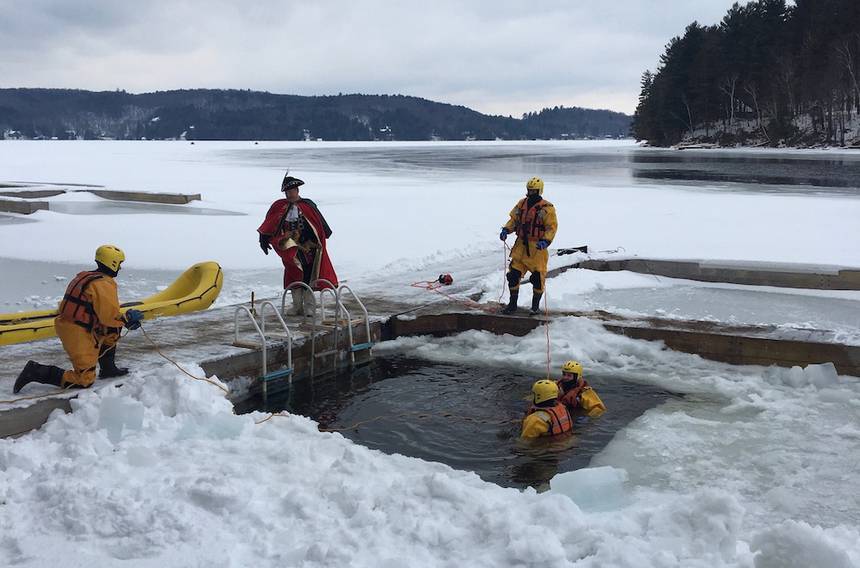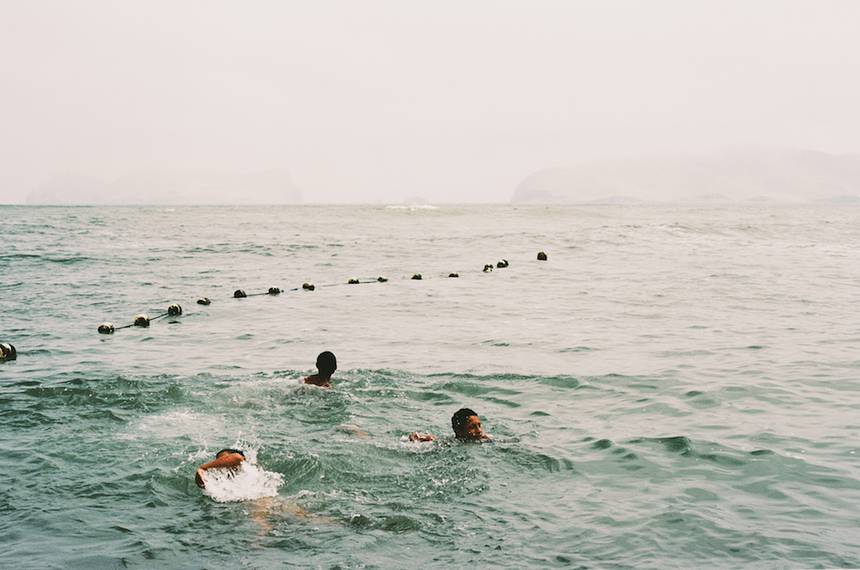Swimmers plunge into frigid lakes and rivers year-round, just for the thrill of it.
I thought my husband’s icy cold morning showers were extreme, until I learned about the ‘wild swimming’ trend. Apparently this is a big thing ago to do year-round, particularly in the United Kingdom, where you don’t have to chop a hole in the ice to get at the water, but it’s still chilly enough to take your breath away.
The Guardian has called wild swimming the “new natural high” and “the new yoga.” Over the past decade, membership in outdoor swimming groups has grown exponentially, with the UK’s Outdoor Swimming Society membership growing from a couple hundred people ten years ago to more than 70,000 in 2017.
Now it’s downright trendy to go for dips wherever you may find open water, particularly if you can document it on Instagram. Travel writer Sarah Stirling set a goal of ticking off 50 freshwater swim spots in Snowdonia, a breathtaking mountainous and glacial region of northwestern Wales. She did it, and the pictures are shiver-inducing proof.
Ella Foote, a spokesperson for the Outdoor Swimming Society in England and founder of the self-explanatory ‘Dip A Day December’ challenge, said frustration with indoor pools is driving the shift toward wild swimming:
“There are so many rules and you don’t get the magic of the outdoors. Plus, cold water has so many health benefits – it improves your mood, increases blood circulation, it helps with muscular pain.”
Indeed, I’ve written before about the many benefits of cold showers – anti-depressant, good for skin and hair, improves athletic performance, builds mental strength – so I can only imagine that those qualities, and the whole experience, are augmented by submerging oneself fully in a wilderness setting.
Mark Harper, who swims with the Brighton swim club, describes it as “bloody cold getting in but you become addicted to the effects of it – you feel great and buzzy all day.”
If this appeals to you, the experts have a few tips. Arrive prepared. Wear flip-flops or neoprene shoes to insulate your feet from the ground. Wear goggles and a hat if it’s really cold. Bring a robe that you can put on as soon as you get out of the water. Opinions seem fairly united against wetsuits, which, in the words of Channel swimmer Ben Alden-Falcone, “kills a key joy of cold-water swimming – the freedom.” He recommends ear plugs instead and acclimatizing your body to the water by submerging your feet for a few minutes beforehand.
Stirling, the Snowdonia swimmer, says to stay in a bit longer than feels comfortable:
“Accept the cold. Breathe in and let it go. My friend banned the C-word [cold]; we were allowed to say things like ‘refreshing’ or ‘elemental’, but not that. Once I learned to accept the temperature, as she did, I found I could calmly slip in. Everything became easier after that.”
I doubt I’ll be jumping into any Canadian lakes at this time of year (here we have truly extreme polar dips at -20C (-4F) temps and below that some people perversely enjoy, my husband included), but I can see the appeal in a tingly, shivery swim at, say, 5C (41F) – or, I should say, the after-effects of such a swim.
 © K Martinko — The site of a polar plunge in Ontario, Canada, that my husband participated in last winter.
© K Martinko — The site of a polar plunge in Ontario, Canada, that my husband participated in last winter.
